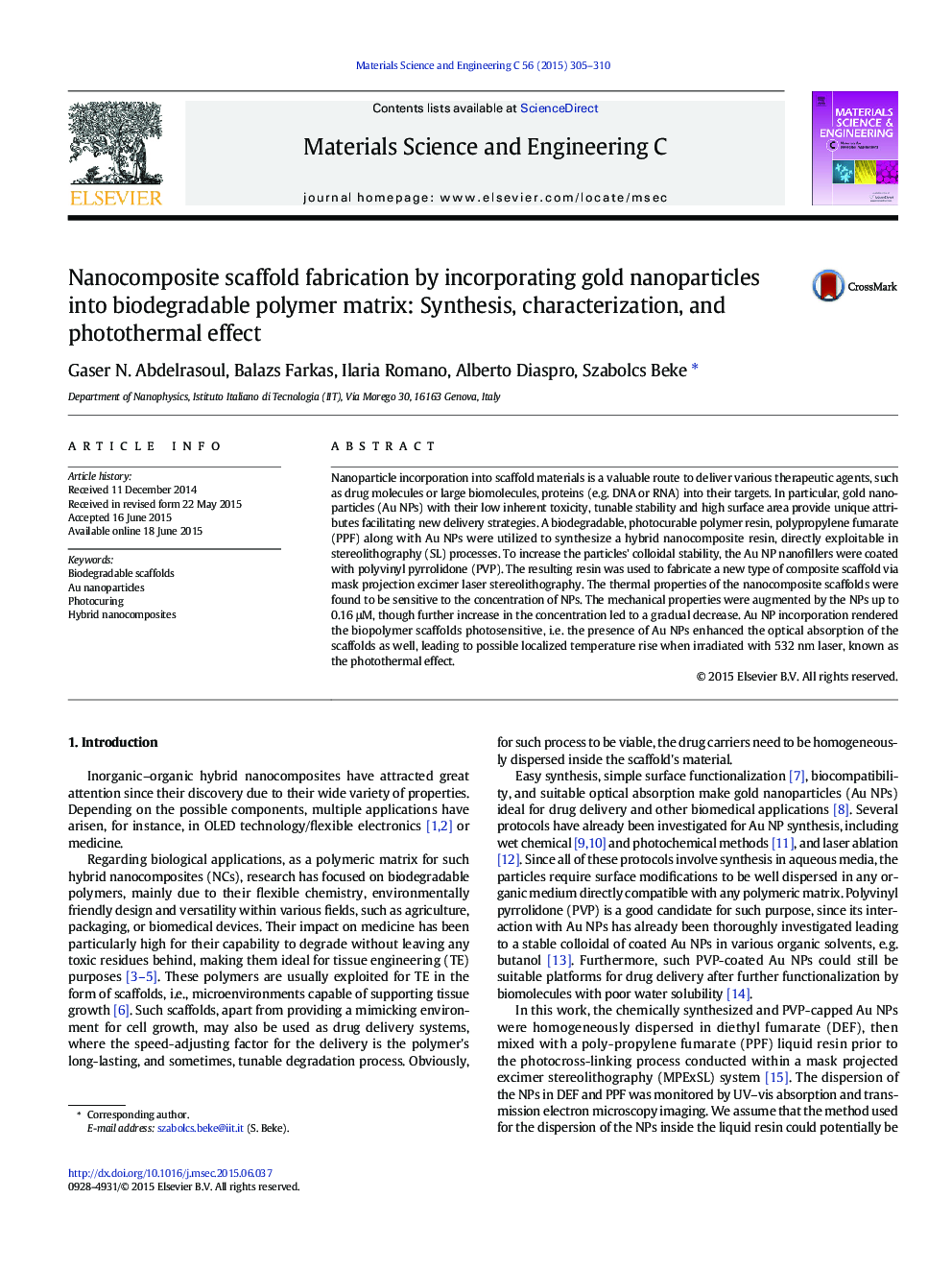| Article ID | Journal | Published Year | Pages | File Type |
|---|---|---|---|---|
| 7869053 | Materials Science and Engineering: C | 2015 | 6 Pages |
Abstract
Nanoparticle incorporation into scaffold materials is a valuable route to deliver various therapeutic agents, such as drug molecules or large biomolecules, proteins (e.g. DNA or RNA) into their targets. In particular, gold nanoparticles (Au NPs) with their low inherent toxicity, tunable stability and high surface area provide unique attributes facilitating new delivery strategies. A biodegradable, photocurable polymer resin, polypropylene fumarate (PPF) along with Au NPs were utilized to synthesize a hybrid nanocomposite resin, directly exploitable in stereolithography (SL) processes. To increase the particles' colloidal stability, the Au NP nanofillers were coated with polyvinyl pyrrolidone (PVP). The resulting resin was used to fabricate a new type of composite scaffold via mask projection excimer laser stereolithography. The thermal properties of the nanocomposite scaffolds were found to be sensitive to the concentration of NPs. The mechanical properties were augmented by the NPs up to 0.16 μM, though further increase in the concentration led to a gradual decrease. Au NP incorporation rendered the biopolymer scaffolds photosensitive, i.e. the presence of Au NPs enhanced the optical absorption of the scaffolds as well, leading to possible localized temperature rise when irradiated with 532 nm laser, known as the photothermal effect.
Related Topics
Physical Sciences and Engineering
Materials Science
Biomaterials
Authors
Gaser N. Abdelrasoul, Balazs Farkas, Ilaria Romano, Alberto Diaspro, Szabolcs Beke,
